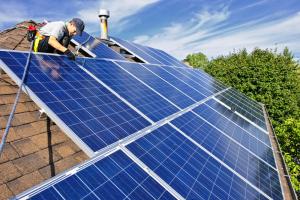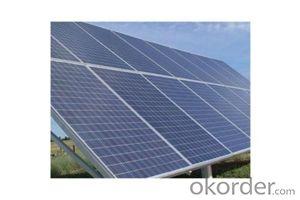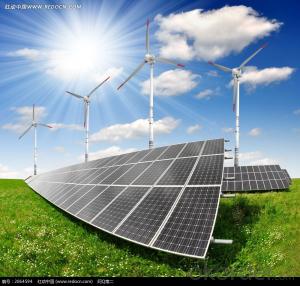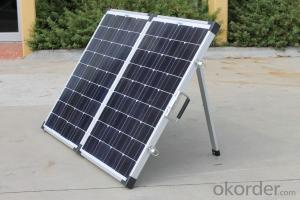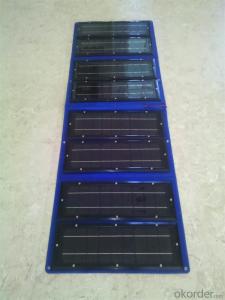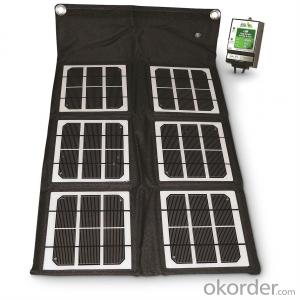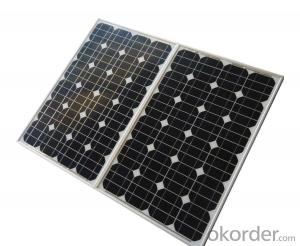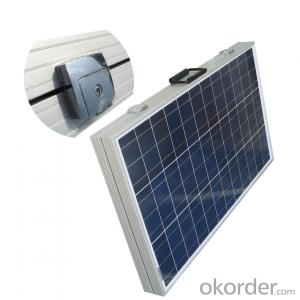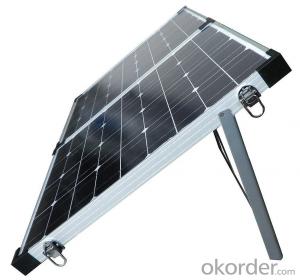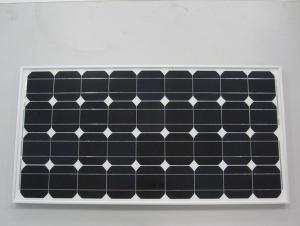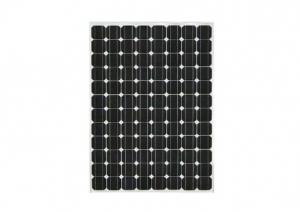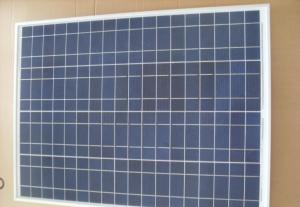170w Folding Solar Panel with Flexible Supporting Legs for Camping - Solar Panels Melbourne Price
- Loading Port:
- Shanghai
- Payment Terms:
- TT OR LC
- Min Order Qty:
- 5000 watt
- Supply Capability:
- 10000 watt/month
OKorder Service Pledge
OKorder Financial Service
You Might Also Like
Specification
Product Description
Folding module kits are designed to provide portable 12 volt power wherever you need it.PoPwer available from 20W to 240W
Features:
· Padded, moulded carry bag
· Heavy duty carry handle, hinges and clasps Stainless steel telescopic&adjustable legs
· Weatherproof solar charge controller with LED indicator
· 5m cable with heavy duty Anderson connectors between module-regulator & regulator-battery clamps
· All cabled up ready to use
· 2 year warranty
These kits are the ideal solution for 4WD, camping, caravaning, boating and recreational activities whereverpower is required for lights, small TV, camping fridge, pump or other small appliances.
| Nominal Peak Power | 170W | 120W (2 x 60W) | 160W (2 x 80W) | 200W (2 x 100W) |
| Power tolerance | 3% | |||
| Cell type | Monocrystalline/Polycrystalline | |||
| Open circuit voltage (Voc) | 21.6V | |||
| Voltage at maximum power (Vmp) | 17.6V | 17.5V | 17.5V | 17.5V |
| Short circuit current (Isc) | 4.9A | 7.4A | 9.88A | 12.34A |
| Current at maximum power (Imp) | 4.54A | 6.86A | 9.14A | 11.42A |
| Maximum system voltage | 1000VDC | |||
| NOCT (Nominal Operating Cell Temperature) | 45 C +/-2 C | |||
| Operating temperature - module | -40 C to +85 C | |||
| Operating temperature – charge | -35 C to +55 C | |||
| Module folded size (mm) in carry bag | 505x550x60 | 505x825x80 | 505x1005x70 | 670x1005x70 |
| Module open size (mm) | 1014x550x30 | 1014x825x35 | 1014x1005x35 | 1344x1005x35 |
| Module net weight (kg) | 9.2 | 13 | 15.2 | 19 |
| Module gross weight (kg) | 11 | 16 | 19.4 | 23.2 |
| Solar charge controller | PWM 12V 10A; IP65 rated | PWM 12V 20A; IP65 rated | ||
- Q: discription how does solar panels save energy
- cool beans got it right. There is Solar electric which converts sunlight to electricity or Solar thermal that heats water or a transfer fluid. they both save energy in a big way. Solar electric or photovoltaic (PV) saves by off setting your electric bill directly. solar thermal saves by cutting the cost to heat your water and if properly sized can actually heat your entire house. This is done in a couple of ways but I won't go into that here.
- Q: What is the impact of hailstorms on solar panels?
- Hailstorms can potentially cause damage to solar panels, particularly if the hailstones are large and the panels are not adequately protected. The impact can range from minor scratches and dents, which may not affect the overall performance of the panels, to more severe damage that can impair their functionality. However, advancements in technology and the use of durable materials have made modern solar panels more resistant to hail damage. Proper installation and maintenance, including the use of protective measures like tempered glass or hail guards, can further minimize the impact of hailstorms on solar panels.
- Q: Can solar panels be used for powering a research facility or laboratory?
- Yes, solar panels can be used to power a research facility or laboratory. Solar panels convert sunlight into electricity, providing a sustainable and renewable source of power. By harnessing solar energy, research facilities and laboratories can reduce their reliance on traditional energy sources and contribute to a greener and more environmentally friendly operation. Additionally, solar panels can be integrated into the existing infrastructure of the facility, making them a viable option for powering various scientific equipment and systems.
- Q: Can solar panels be installed on a parking lot or carport?
- Yes, solar panels can be installed on a parking lot or carport. In fact, this is a growing trend known as solar carports or solar parking lot canopies. These structures not only provide shade for vehicles but also generate clean and renewable energy. They are a great way to utilize unused space for solar power generation while providing additional benefits such as reducing heat island effect and offering covered parking.
- Q: Can solar panels be used in disaster relief efforts?
- Yes, solar panels can be used in disaster relief efforts. They provide a reliable and sustainable source of electricity, allowing for the operation of critical equipment such as lights, phones, and medical devices. Solar panels can be quickly deployed in affected areas and can help reduce the reliance on fossil fuel-based generators, thereby reducing pollution and the need for fuel transportation.
- Q: how much energy does a kilowatt solar panel produce in a year? (average)
- You would be amazed how often I have answered this question. The answer is that it depends on your latitude and local weather . Let's see if I can give you enough information so that you can determine the answer for yourself. A kW solar panel is rated at kW when it is exposed to a solar flux of kW/m^2 (called a peak sun hour). There are readily available tables of effective peak sun hours per day by city (see Reference ). Let's use Fairbanks, AK as an example (it is the first line of the table). Fairbanks get an average of 3.99 of peak sun hours per day on average. So your panel would produce 3.99 kW*hr per day on average.
- Q: How long does it take to recoup the cost of solar panels through energy savings?
- The time it takes to recoup the cost of solar panels through energy savings varies depending on various factors such as the cost of installation, the amount of sunlight received, the energy consumption of the household, and any applicable rebates or incentives. On average, it can take anywhere from 5 to 20 years to recoup the initial investment. However, with the decreasing costs of solar panels and the rising energy prices, the payback period is becoming shorter, making solar panels a more financially viable option for many homeowners.
- Q: Can solar panels be installed on a library or educational institution?
- Yes, solar panels can be installed on a library or educational institution. In fact, many libraries and educational institutions have already embraced solar energy and installed solar panels on their rooftops or surrounding areas. This helps them reduce their carbon footprint, save on electricity bills, and serve as a sustainable example for the community.
- Q: I would like to know how do you build a solar panel?
- At first, you will need about one square foot of thin copper plate, two alligator clips and short leads of wire, a wide mouth glass jar, tap water and salt. Cheers,
- Q: I am doing a big project for school, and I have decided to do it on solar panels. I am new to the subject but have done some research on it; I would like to buy a single panel, a charge controller, an inverter and a battery, to charge a simple lamp. My question is if the items in the links will work together and if the panel will produce electricity?
- go with a 2 volt dc lamp bulb [auto lamp] then you wont need the inverter, all solar panels produce dc current
Send your message to us
170w Folding Solar Panel with Flexible Supporting Legs for Camping - Solar Panels Melbourne Price
- Loading Port:
- Shanghai
- Payment Terms:
- TT OR LC
- Min Order Qty:
- 5000 watt
- Supply Capability:
- 10000 watt/month
OKorder Service Pledge
OKorder Financial Service
Similar products
Hot products
Hot Searches











